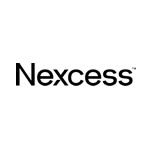
Hybrid learning has become a foundational approach in modern education, but it also presents new challenges, especially when it comes to keeping students engaged across in-person and remote environments. Fortunately, technology is helping educators bridge the gap.
Vizrt’s original article explores video-based tools, such as lecture capture, which gained massive popularity during the COVID-19 pandemic, have revolutionized how students consume and interact with course content. These systems allow teachers to record and distribute high-quality videos of lectures, lab demonstrations, and classroom activities, making them available for both live streaming and on-demand access.
Empowering Students With On-Demand Learning
Lecture capture technology does more than just provide convenience—it transforms how students engage with academic material. By giving learners the ability to revisit lessons at their own pace, these systems support deeper understanding and better retention of complex topics. In fact, combining recorded video content with traditional face-to-face instruction has been shown to boost student performance and satisfaction.
Real-Time Engagement, Anywhere
Tools like Vizrt’s TriCaster help hybrid classrooms stay interactive by integrating real-time polls, chat functions, and Q&A through platforms like Microsoft Teams. Whether students are physically present or joining remotely, these features promote active participation and make the learning experience more cohesive and collaborative.
With lecture capture and hybrid-ready video production tools, educators can create immersive, engaging environments where all students can thrive, regardless of location.
Learn more about Vizrt below:













